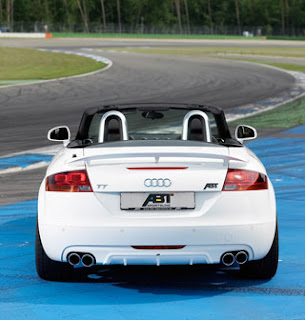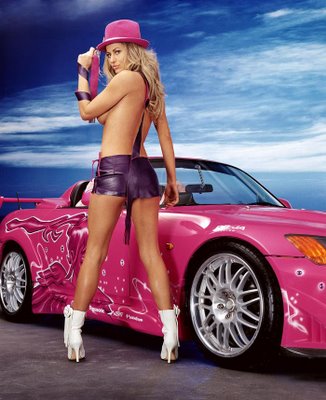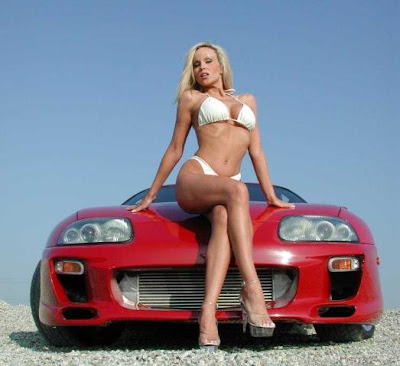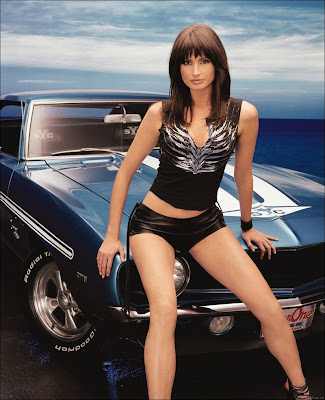

 Toyota Motor Sales (TMS), U.S.A., Inc., unveiled the all-new second-generation Corolla Matrix at a press conference today at the 2007 Specialty Equipment Market Association (SEMA) Show. The Toyota Matrix, the sporty five-door vehicle that helped redefine the concept of a crossover utility vehicle, has been redesigned for the 2009 model year to offer performance that matters for driver enjoyment.
Toyota Motor Sales (TMS), U.S.A., Inc., unveiled the all-new second-generation Corolla Matrix at a press conference today at the 2007 Specialty Equipment Market Association (SEMA) Show. The Toyota Matrix, the sporty five-door vehicle that helped redefine the concept of a crossover utility vehicle, has been redesigned for the 2009 model year to offer performance that matters for driver enjoyment."The Matrix concept was based on blending the functionality of an SUV, the style, image and performance of a sports car with the affordability of a subcompact sedan," said Tim Morrison, Toyota Division corporate marketing manager. "For 2009, it’s all that, and more. It may have the body of a five-door hatch, but it comes with the soul of a two-door sports car." Development of the 2009 Matrix focused on greater exterior coupe-like styling with enhanced interior utility and improved dynamic performance. It was made wider with a lower stance than the current model while maintaining its interior space. The result is a sporty, dynamic shape that contains room for five people to ride in comfort. As a result of significant changes to the Matrix’s profile, the theme is flowing and dynamic. The design expresses a low center of gravity, and coupe-like style with a fun-to-drive image. From the rear, the Matrix has rounded rear windows and continuous character lines that run from the front grille to the A-pillar. Matrix will be available in three grades – Standard S and the XRS. And Matrix will offer the option of all-wheel drive (AWD) with the S grade. The S and XRS models integrate a front underbody spoiler with a large mesh fog lamp bezel and rear underbody spoiler. A rear deck spoiler will be standard for all XRS models.The Matrix interior is completely redesigned to enhance driving enjoyment, comfort and utility. Seats have been redesigned to accommodate the vehicle’s new lower profile while maintaining the expected high comfort levels, and seat positions were lowered slightly to maintain appropriate headroom. As a result, cabin space remains equal to that of the previous Matrix. A new three-spoke steering wheel enhances the rest of the new Matrix interior. XRS models come standard with a leather-trimmed steering wheel that also includes spoke-mounted audio controls and hands-free Bluetooth® capability when equipped.
The driver and front passenger are treated to comfortable new sport seats, with seat-mounted side airbags. A fold-down seatback table will be available for the front passenger’s seat, enhancing interior utility on S and XRS. A movable and removable cup support element for the front center console helps provide versatile storage area and convenience. The cup holder area can be used as a tray when the divider is removed. For rear-seat passengers, expanded front-to-back couple distance helps to provide additional room and comfort. A folding seat with a 60/40 split includes a middle-seat headrest for the fifth passenger. The Matrix is equipped with a new, high-efficiency air-conditioning system with larger vents for directional accuracy and offers reduced power consumption and improved heating and cooling. The 2009 Matrix offers the choice of two different engines, a five-speed manual transmission, and either four- or five-speed automatic transmissions. A 16-valve, 1.8-liter four-cylinder engine will produce 132 horsepower at 6,000 rpm and 128 lb.-ft. of torque at 4,400 rpm. The engine will feature Dual VVT-i (Variable Valve Timing with intelligence) on both the intake and exhaust camshafts that helps it achieve outstanding performance and economy.
Estimated EPA fuel economy ratings are 26/32 city/highway mpg for manual transmission models and 25/31 for the automatic transmission model powered by a 1.8-litre engine. For those who crave just a bit more horsepower and torque, the Matrix offers a 16-valve DOHC 2.4-liter four-cylinder engine with VVT-i that will produce 158 horsepower at 6,000 rpm and 162 lb.-ft. of torque at 4,000 rpm. Matrix models powered by the 2.4-litre engine with five-speed automatic transmission will have an estimated EPA fuel economy of 21/29 city/highway mpg.The Matrix’s base wheel is a 16-inch steel unit with a six-spoke full wheel cover. A distinctive 17-inch five-spoke aluminum wheel will be available for the S grade, and an 18-inch aluminum alloy wheel with a twin five-spoke design will come standard on the XRS grade. Dual-stage SRS airbags will be standard for the driver and front passenger. Front seat-mounted side airbags, two-row side curtain airbags and front active headrests are also standard. Brake performance will be improved with standard front and rear disc brakes on all Matrix grades. Anti-lock brakes (ABS) with Electronic Brake Distribution (EBD) are also standard. Vehicle Stability Control (VSC) with TRAC and off switch will be standard on XRS and available as an option on all other models. VSC automatically adjusts engine output and the vehicle’s braking force at each wheel when the vehicle experiences a loss of traction during cornering. Form, fun and functionality will be in abundance with an array of standard convenience features across all three grades. Base equipment on all Matrix models include power color-keyed outside rearview mirrors, power steering, tilt and telescopic steering wheel, daytime running lights, heavy duty rear window defogger, intermittent windshield wipers, 12-volt power outlet, four cupholders, auxiliary audio input jack, front center console box and an engine immobiliser.
The S grade adds standard power door locks and windows with one-touch down driver-side, 115-volt power outlet, cruise control, intermittent rear window wiper, fold-flat front passenger seat, remote keyless entry, AM/FM/CD with MP3 capability and six speakers, front and rear underbody spoilers and fog lamps.In addition to these features, the XRS grade features standard P215/45 R18 tires on 18-inch alloy wheels, sport strut tower brace, VSC with TRAC and off switch, and a three-spoke leather-trimmed steering wheel with audio steering wheel controls. In addition to the array of standard equipment, an impressive list of optional comfort and utility features are available to further enhance the Matrix driving experience. Available options will include an AM/FM/CD with six-speaker system with DVD navigation with XM NavTraffic® capability, alloy wheels, power heated outside rearview mirror, intermittent rear window wiper, cruise control, power door locks, power windows, and remote keyless entry.
The all-new Matrix will hit Toyota dealerships in February 2008.




















